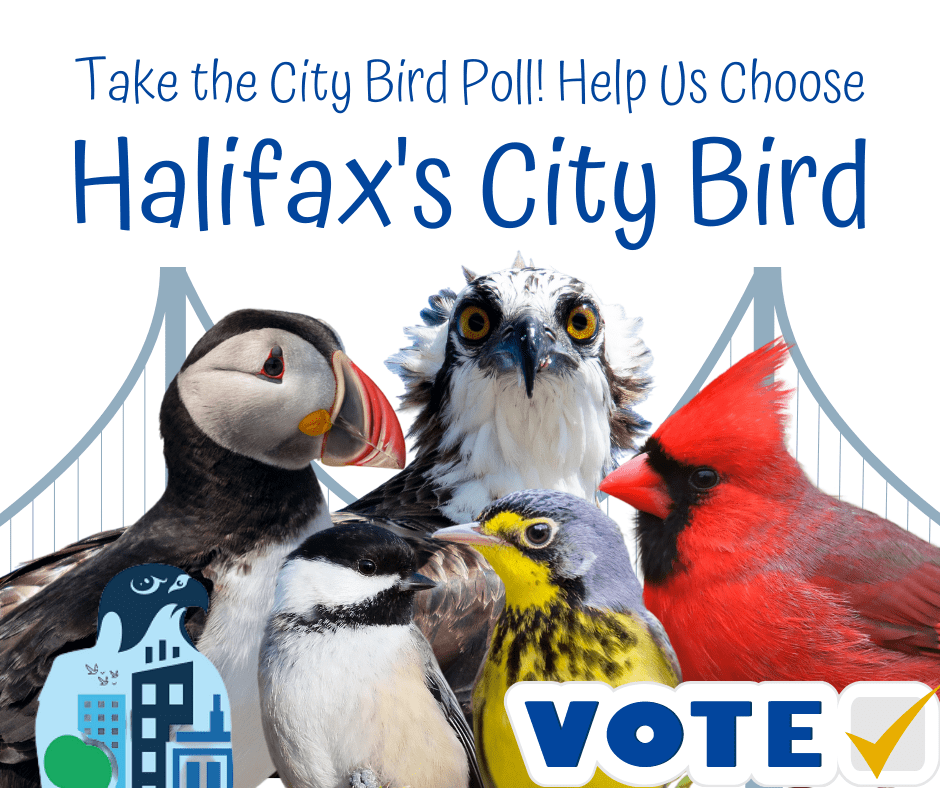
In 2022, HRM was declared a Nature Canada-certified Entry-level Bird Friendly City. The Bird Friendly Halifax coalition is working to improve this status by addressing priority bird threats in our city, including but not limited to: habitat loss, predation by roaming cats, and window strikes, and through education and outreach initiatives that connect residents with their avian neighbours.
The City Bird Poll is an opportunity for Haligonians to celebrate their favourite bird and choose a 2023 mascot for Bird Friendly Halifax! We plan to run the poll annually, so there will always be another chance to campaign for your favourite feathered friend, preferred passerine, or best birdy buddy!
Vote for your bird by March 31st!
Our 2023 City Bird Candidates:
Nominated by Emma Bocking, Halifax Regional Municipality: “I think the chickadee deserves to be HRM’s bird. Many people have fond early memories of feeding chickadees by hand in parks like the Shubencadie Canal and Point Pleasant. These up close encounters bring people of all ages closer to nature and can inspire a love of wildlife.”
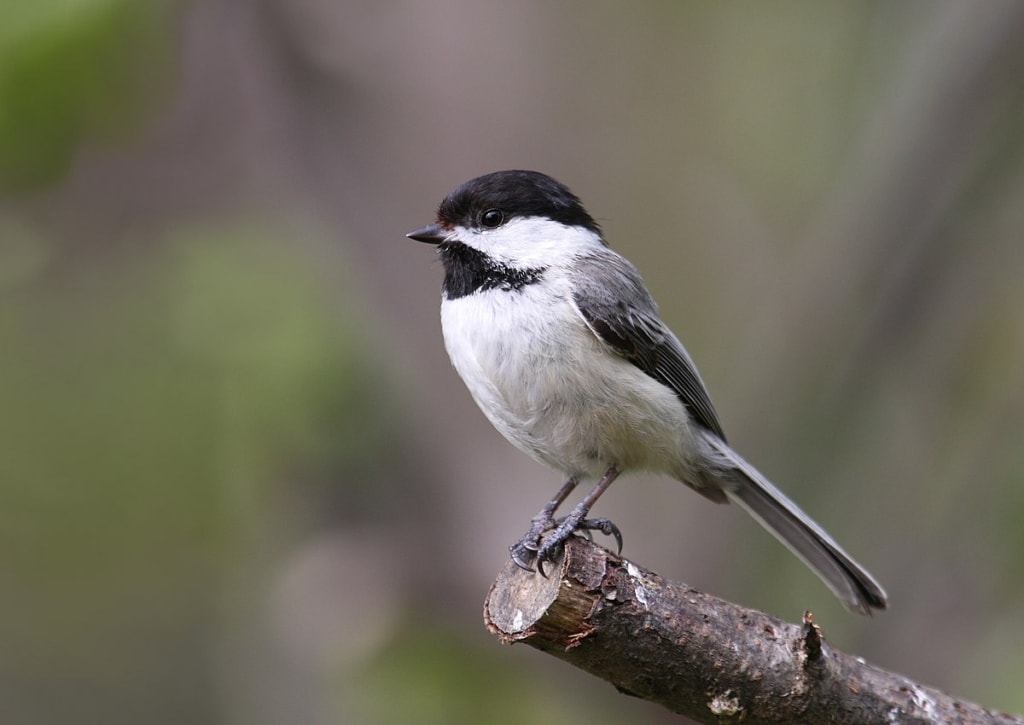
The Black-Capped Chickadee is a small member of the Tit family found across Nova Scotia, at home in both the most remote forest and our urban parks. They are commonly found at residential bird feeders and are smart enough to remember what time the bird seed is put out and which humans may offer a friendly hand with snacks. They have complex but easily recognizable calls and songs, signaling food with little chips and threats with repeated dee notes. The more dees in a chickadee-dee-dee call, the higher the threat level.
Nominated by the Bird Friendly Halifax Coalition.
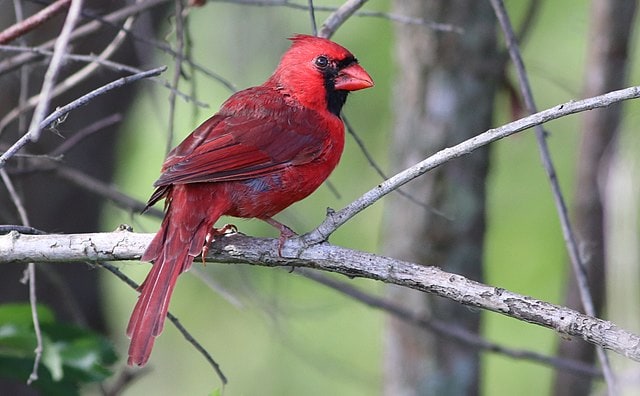
The Northern Cardinal was previously uncommon in Nova Scotia outside of the deep South Shore, where it was occasionally spotted at bird feeders and in town parks. The expansion of suburban development and clearing of previously-forested areas along the East coast, though detrimental to many other birds, seems to have benefited these urban migrants. Cardinals prefer dense shrubby areas such as forest edges and ornamental landscaped residential yards, making them popular feeder birds.
Nominated by Dr. Cindy Staicer, Dalhousie University: “The Canada Warbler is a high-profile Species At Risk that lives in the wilds of HRM. We need to increase awareness of their habitat needs so that residential development does not drive them away. Instead, we can enable them to thrive here.”
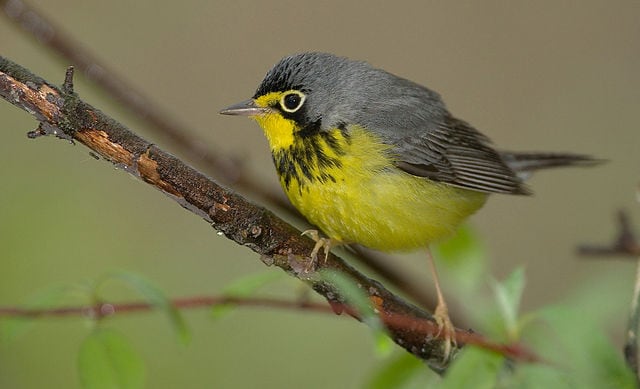
The Canada Warbler is a small forest-dwelling songbird that winters in Central and South America and breeds in Eastern and Central North America, from Alberta to Nova Scotia. They are one of our last migratory birds to arrive in the summer and among the first to leave after breeding, preferring the warm buggy weather of true summer. Throughout its short stay in the North, the Canada Warbler makes use of mixed deciduous/coniferous forests with a dense shrub and complex understory layer. In Atlantic Canada, it seems to prefer forested wetlands, mature cedar swamps, regenerating mixed forests, and moist sites with cinnamon fern, speckled alder, and sphagnum. Such sites can be found speckled throughout Halifax Regional Municipality, even close to the city core.
Nominated by the Bird Friendly Halifax Coalition.
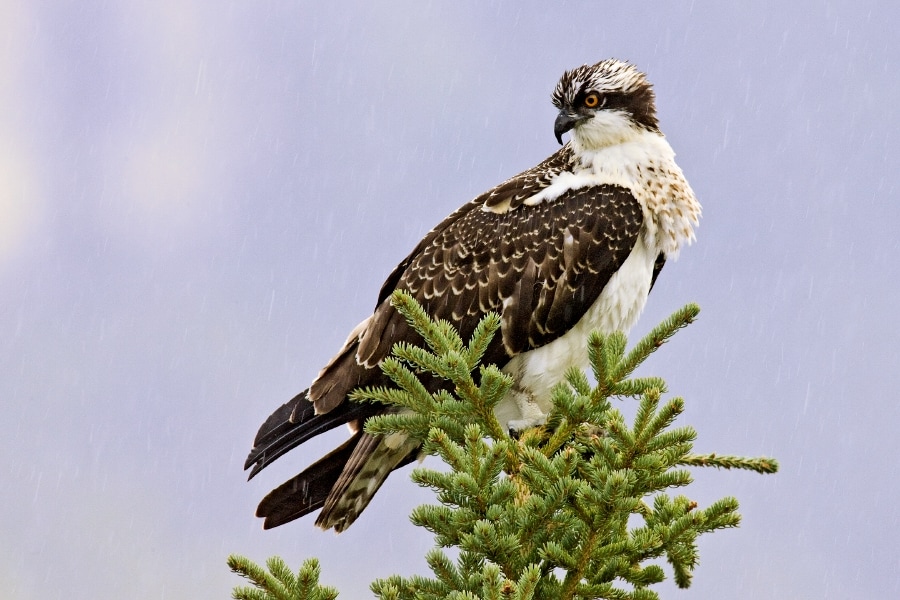
Osprey are a common site in the Halifax area compared to some other raptors, but unusual in their ability to dive for their marine prey. They have a twisted back toe that allows them to hold on to prey with two toes in front and two behind, as well as barbed pads on the soles of their feet to help grip slippery fish. Once threatened by unregulated pesticide use, osprey populations have started to recover since the enforcement f widespread bans on DDT in the 1970s and 80s. Osprey breed in Nova Scotia in the summertime and migrate to central America for the winter.
Nominated by Becky Parker, NatureNS: “Many people associate the Atlantic Puffin with the rocky shores of Newfoundland and Labrador (after all, it is that province’s official bird!) but they are just as happy off the coasts of Nova Scotia, particularly the turbulent rocky shores of the Atlantic coast. Puffins are important ecological indicators for our oceans, spending their lives at sea or on rocky island roosts, but my favourite thing about them is how awkward they look when they take off to fly. They’re so chunky and awkward, it takes a couple seconds for them to really get going. After two years of living and working through the COVID-19 pandemic, I just find the crash-and-tumble nature of the plucky puffin to be especially relatable, and I think they deserve our love in 2023.”
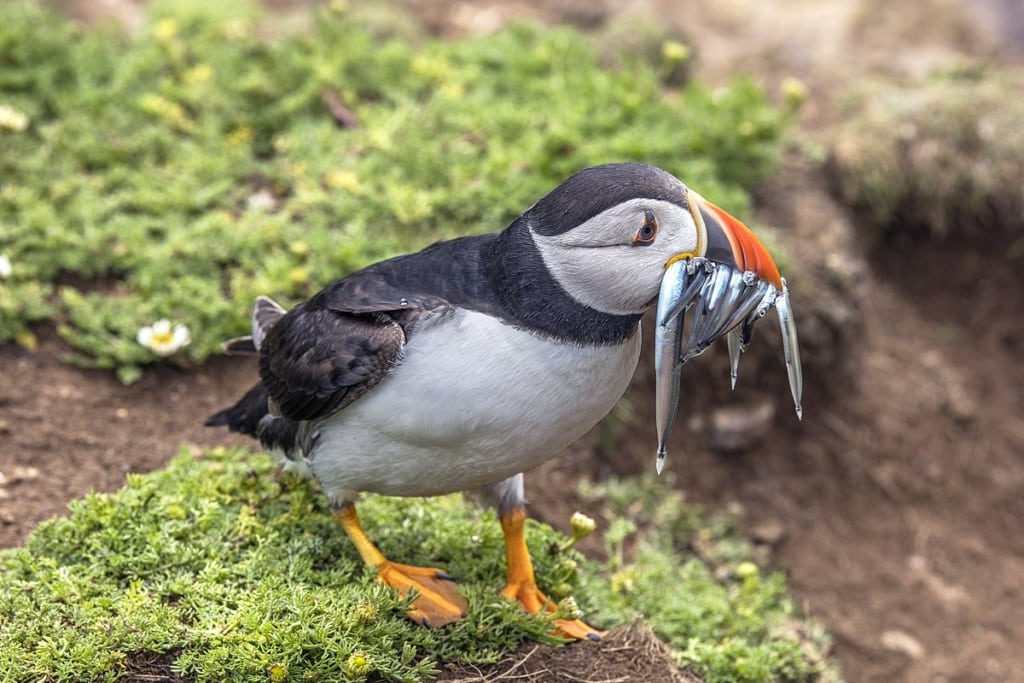
The Atlantic Puffin (Fratercula arctica) is a small, plump, seabird in the Auk family. It can be found across the North Atlantic, spending autumn and winter on the open ocean and the summer close to shore, where it forms breeding colonies on exposed coastal and island clifftops. Approximately 350,000 to 400,000 puffins currently breed in Eastern Canada. Puffins declined in the early 1900s due to unregulated harvesting in breeding colony locations, and today are threatened by climate change and related changes to their food availability, invasive species like rats on breeding islands, and plastic pollution.